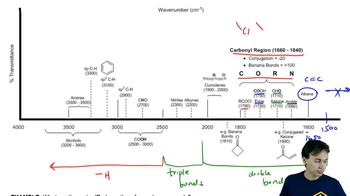Draw the expected signal for a hydrogen with the following coupling constants.
(a) Hₐ : δ 5.34 (Jₐ꜀ = 12 , Jₐ₆ = 2)
 Verified step by step guidance
Verified step by step guidance Verified video answer for a similar problem:
Verified video answer for a similar problem:



 8:02m
8:02mMaster Splitting with J-Values:Complex Tree Diagram with a bite sized video explanation from Johnny
Start learning